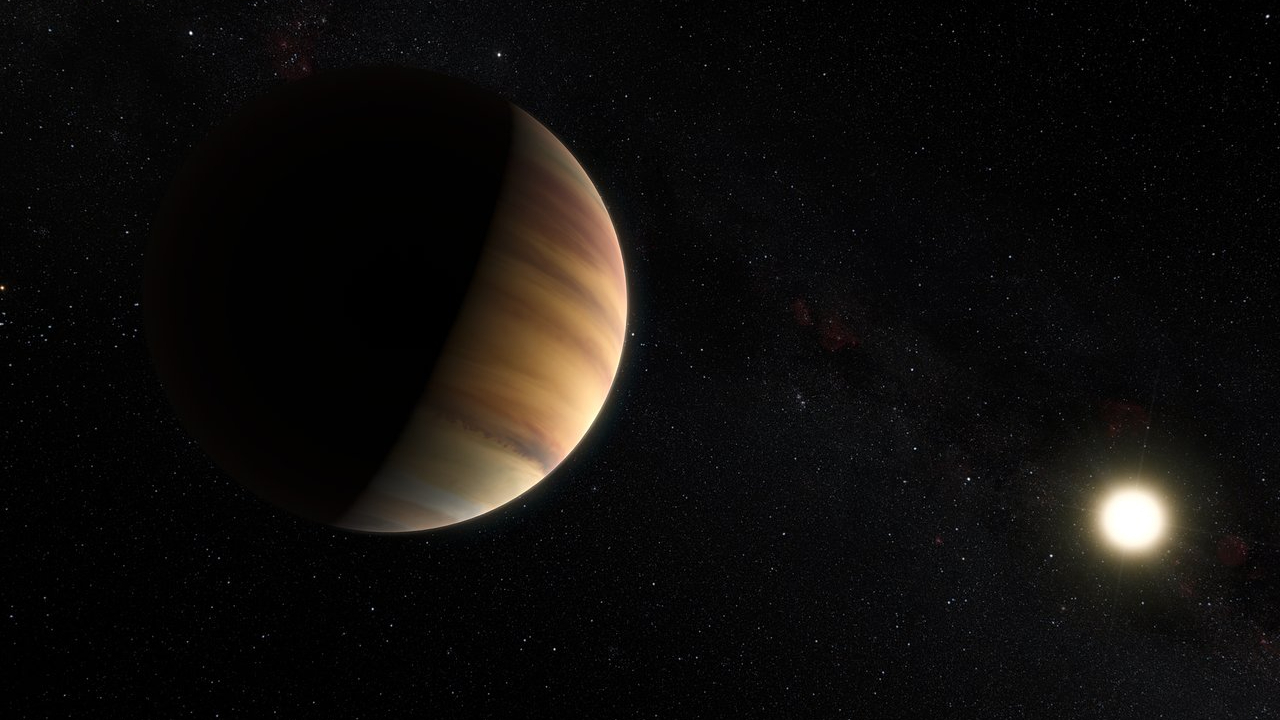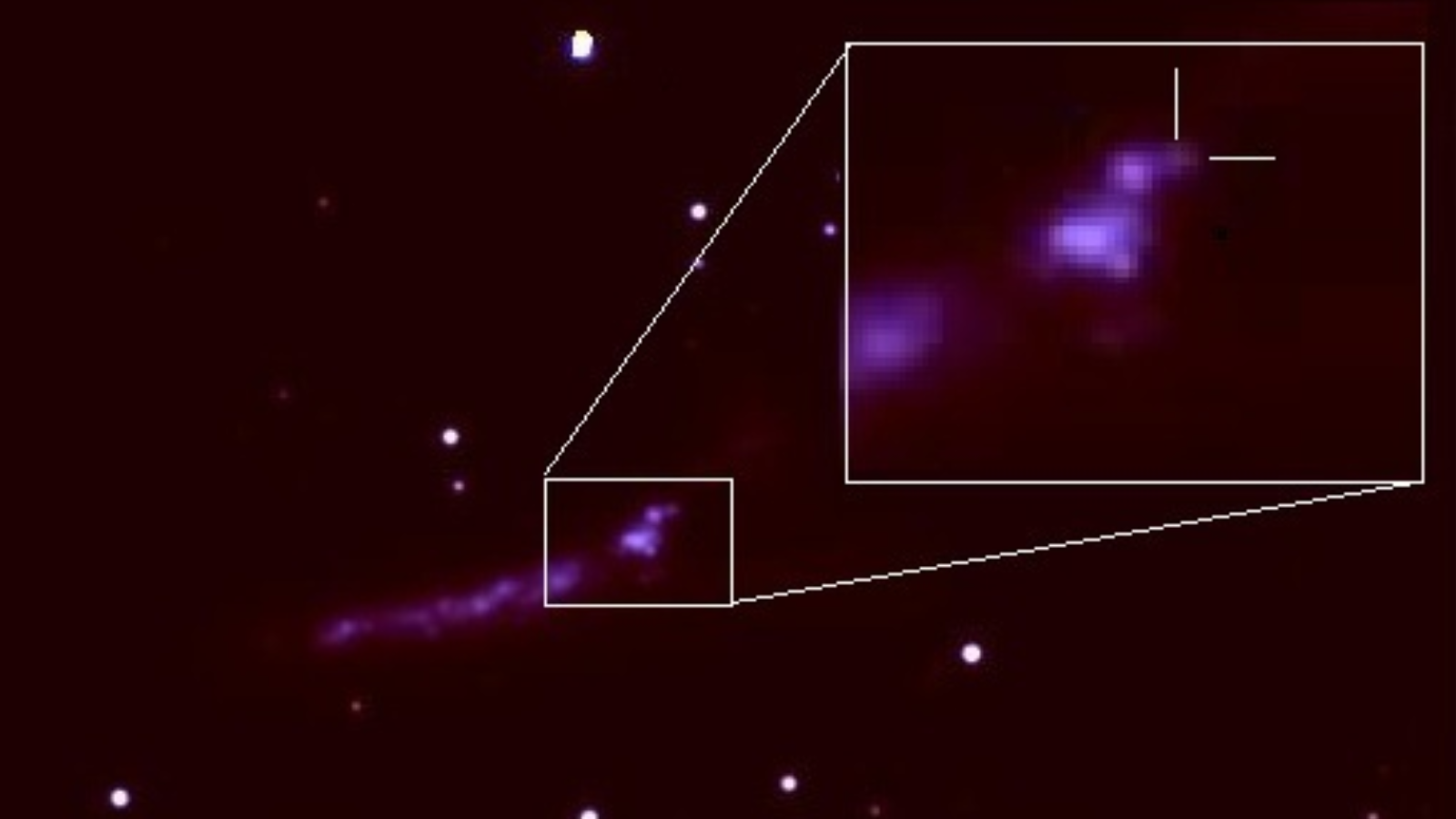As scientists find real exoplanets, sci-fi writers change their vision of alien worlds
Fictional alien worlds have evolved to resemble the real ones astronomers are finding.

Trends in the way that exoplanets are depicted in science fiction (sf) have changed since the first real exoplanet around a sun-like star was discovered in 1995, says a new study from researchers at the University of St. Andrews in Scotland.
Before it was known for sure that there were planets orbiting other stars, we had been exploring such worlds through sf, whether it was with the Enterprise going boldly, following the Rebels in the original "Star Wars" trilogy or in the pages of novels written by the likes of Asimov, Le Guin and Frank Herbert. These stories featured florid world-building, with great galactic empires, bizarre alien creatures and many a planet that was habitable just like our Earth.
Then, in 1995, Michel Mayor and Didier Queloz of the Geneva Observatory found 51 Pegasi b, the first known exoplanet around a sun-like star. (Three planets orbiting pulsars had been detected a few years earlier, but 1995 is considered the more historic moment.) Suddenly, we didn't have to rely on sf to imagine other planetary systems; we had access to real data that over the past 29 years has poured in at an accelerating rate. As of March 12, 2024, NASA's exoplanet count stands at 5,595 worlds across 4,160 planetary systems, with over 10,000 more planetary candidates awaiting confirmation.
Related: Exoplanets: Everything you need to know about the worlds beyond our solar system
Now, a new study by Emma Puranen, Emily Finer, Christiane Helling and V. Anne Smith of St. Andrews has explored how sf has changed to reflect these discoveries, and how this allows sf to be used as a tool for communicating science.
To do so, the researchers collated a database of 142 fictional planets, roughly split half and half before and after the 1995 discovery of 51 Pegasi b. These planets were picked partly by the study team, and also via a crowdsourced Google form that collected fictional planet data from anonymous submissions that was shared on social media and at events such as the annual World Science Fiction Convention (WorldCon), where the Hugo Awards are presented. Planets from expansive fictional universes such as "Star Trek" and "Star Wars" were purposefully limited so that they didn't come to dominate the dataset; for example, of the 142 fictional planets, only eight were included from the various "Star Trek" shows and movies. More than half came from novels such as Frank Herbert's "Dune," the film version of which is currently filling cinemas.
Puranen's team then characterized each fictional planet according to nine variables and then applied a Bayesian network to these variables, looking for trends.
Breaking space news, the latest updates on rocket launches, skywatching events and more!
A Bayesian network is a way of statistically mapping different variables looking for their interconnectedness; in other words, if variable X is true, how likely or not is it that variable Y is also true? Such large statistical studies are atypical of literary and media research, which traditionally tend to focus on specific authors, books or films.
"Essentially, we're studying something that is usually studied on a case-study basis, but we've done it using bigger data," Puranen told Space.com.
Related: The best sci-fi books: modern masterpieces & all-time classics
The nine variables are whether a given fictional planet first appeared before or after 1995, whether the fictional planet is in its star's habitable zone, whether it orbits a real star, whether it is home to native life, whether it has intelligent life, whether humans can breathe the atmosphere easily, the type of media the planet appeared in (novel, film, TV, video game or podcast), whether it is an Earth-like terrestrial world or a gaseous planet like Jupiter, and whether in the planet has an established population of non-native humans that colonized it centuries or millennia before. For that last one, think of the Galactic Empire in Isaac Asimov's "Foundation" series, or the worlds of Ursula Le Guin's novels, where humans settled on myriad planets long before the point where the story begins.
Using unsupervised machine learning, the team created a Bayesian network in which the links are formed by these variables, each of which has an "influence score." These scores can be positive or negative, indicating the direction of that influence.
"For example, we have one variable that is whether the planet first appeared in fiction before or after the discovery of real exoplanets, and another variable of whether the exoplanet hosts intelligent native life or not," said Puranen. "These have a negative influence, which means that after the discovery of real exoplanets we've seen fewer fictional exoplanets that have native intelligent life."
This, says Puranen, reflects what real exoplanet and astrobiology science is telling us. The vast majority of exoplanets discovered by astronomers are not habitable, at least not to life as we know it. And we know very little about the handful that could potentially be habitable. Coupled with the continued absence of any kind of detection in the search for extraterrestrial intelligence (SETI), we see this dearth of Earth-like worlds increasingly reflected in modern sf that is more pessimistic about the possibility of alien civilizations. Instead, if modern sf features life on such worlds, the trends indicate it is more likely to be of the non-intelligent animal or microbial variety. Established non-native humans and intelligent native life are the two Earth-like traits most likely to be missing in modern sf, and galactic empires, it seems, are not in vogue in new fiction.
(As a caveat, it's important to note that we need to be careful when describing life as intelligent or not; it is often used to infer whether life is in a technological civilization or not, but life doesn't have to have technology or civilization as we know it to be considered intelligent; in fact, the definition of intelligence can be quite wide-ranging.)
"We also noticed a decrease in established non-native humans on fictional exoplanets since 1995 as well, which might be increased awareness of the harms of colonization, for example," said Puranen. The results indicate that, prior to 1995, sf contained more stories about humans spreading across the galaxy and settling on more worlds. While such stories are still told today, they are fewer in number.
Other trends included a cluster of variables — the presence of life, of intelligence, of a planet in the habitable zone with air that an established population of non-native humans can breathe — that all have positive links between them in the Bayesian network. These describe Earth-like worlds in fiction. Counter to this are negative links that suggest that there are few gaseous worlds in sf that have atmospheres that we could breathe and life that flourishes, which is what we would expect from what science tells us. Yet after 1995 the fraction of Earth-like planets also decreased, reflecting the fact that we haven't discovered any truly Earth-like planets yet in reality.
All this, according to Puranen, indicates that sf broadly recognizes the science that underpins what is required to make a world habitable, and that it is learning this from real exoplanet discoveries that make the news headlines on websites such as Space.com.
Related: The search for alien life
And this is why Puranen believes that sf can be a useful tool for science communication, at least in the field of exoplanets and habitability, although it shouldn't be given carte blanche.
"I think sf can be a powerful tool, but it's one that you have to be careful of," said Puranen. "It can open your mind, it can get you to think about various possibilities and inspire you, but it could also give you completely the wrong idea about things."
For example, despite how sf is changing to reflect real exoplanet discoveries, the purpose of fictional planets is first and foremost to help tell a story. Often that requires a planet on which our heroes can have adventures, and hence that means there is a bias towards a higher proportion of habitable worlds in the sf universe than there is in the real population of known exoplanets. However, without a scientific background, readers and watchers of sf may be unaware that this is the case.
"The population of science-fiction exoplanets is and always will be completely different from the population of real, discovered exoplanets, because the science fiction ones are constructed to serve a narrative purpose," said Puranen.
Nevertheless, the statistical evidence that shows how sf changes in response to scientific discoveries is in itself useful for communicating science by showing how the fiction reflects real discoveries, and the analysis of sf can be used to communicate those discoveries.
The findings were published March 4 in the Journal of Science Communication.

Keith Cooper is a freelance science journalist and editor in the United Kingdom, and has a degree in physics and astrophysics from the University of Manchester. He's the author of "The Contact Paradox: Challenging Our Assumptions in the Search for Extraterrestrial Intelligence" (Bloomsbury Sigma, 2020) and has written articles on astronomy, space, physics and astrobiology for a multitude of magazines and websites.
